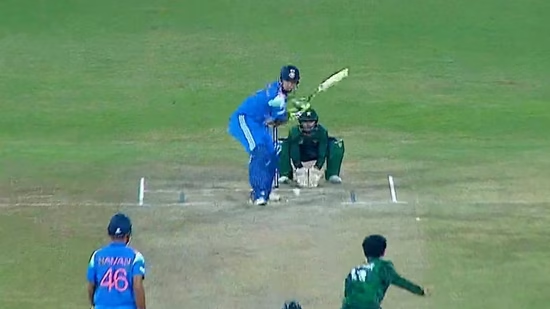Federal judge rebukes administration’s use of force during ‘Operation Midway Blitz’

A federal judge on Thursday issued an extraordinary rebuke of the Department of Homeland Security’s immigration enforcement operation in Chicago, saying the administration made “widespread misrepresentations” as to what was occurring during the operation.
“While Defendants may argue that the Court identifies only minor inconsistencies, every minor inconsistency adds up, and at some point, it becomes difficult, if not impossible, to believe almost anything that Defendants represent,” Judge Sarah Ellis wrote about the administration in a scathing 233-page ruling.
The ruling stems from a case in which Ellis limited the Border Patrol’s use of force against protesters and members of the media in Chicago during the so-called “Operation Midway Blitz.”
Law enforcement officers during a standoff with U.S. Immigration and Customs Enforcement (ICE) and federal officers in the Little Village neighborhood of Chicago, Oct. 4, 2025.
Jim Vondruska/Reuters
Ellis said that Border Patrol commander-at-large Greg Bovino lied about the events that transpired in the Little Village area of Chicago in October.
“Turning to Bovino, the Court specifically finds his testimony not credible. Bovino appeared evasive over the three days of his deposition, either providing ‘cute’ responses to Plaintiffs’ counsel’s questions or outright lying,” the judge wrote Thursday.
Ellis said that Bovino told the court that several individuals in Little Village were wearing maroon hoodies, a color he says is consistent with the Latin Kings gang, but the judge argued the evidence says otherwise.
In a statement Friday, a top Department of Homeland Security official said Judge Ellis’ order doesn’t change “the reality of the situation on the ground and at the appeals level.”
The 7th Circuit Court of Appeals stayed Judge Ellis’ initial order while the administration’s appeal is heard.
Ellis went into further detail Thursday about Bovino and federal agents’ alleged reporting of events.
Bovino and DHS had said that a rock hit Bovino in the helmet before he threw tear gas, Ellis wrote. Bovino admitted in a deposition that he was not hit with a rock until after he had deployed tear gas. Bovino then offered a new justification for his use of chemical munitions, testifying that he only threw tear gas after he “had received a projectile, a rock,” which “almost hit” him, Ellis wrote. But on Nov. 4, the final session of his deposition, Bovino admitted that he was again “mistaken” and that no rock was thrown at him before he deployed the first tear gas canister.
A demonstrator confronts law enforcement officers during a standoff with U.S. Immigration and Customs Enforcement (ICE) and federal officers in the Little Village neighborhood of Chicago, Oct. 4, 2025.
Jim Vondruska/Reuters
Body-worn cameras and helicopter videos from Border Patrol agents in Little Village “do not match up” with descriptions that agents gave the court, according to Ellis. In one such instance, the DHS publicly claimed that agents were hit with an artillery shell type firework, “when the helicopter and BWC footage indicates that those explosions were instead agents’ flashbang grenades.”
On Oct. 3, Bovino can be heard warning the crowd that if they do not disperse, they will get arrested. Protesters, according to Ellis, attempted to get back, but officers started putting their hands on them.
In another instance, the department alleged that protesters had “shields with nails on them, but video demonstrates that at least some of these shields were merely pieces of cardboard, none of the shields had nails in them, and nothing warranted the aggression that the agents showed toward the protesters holding these shields,” the judge wrote.
The judge also said that body-worn camera shows an agent using ChatGPT to finish an incident report.





